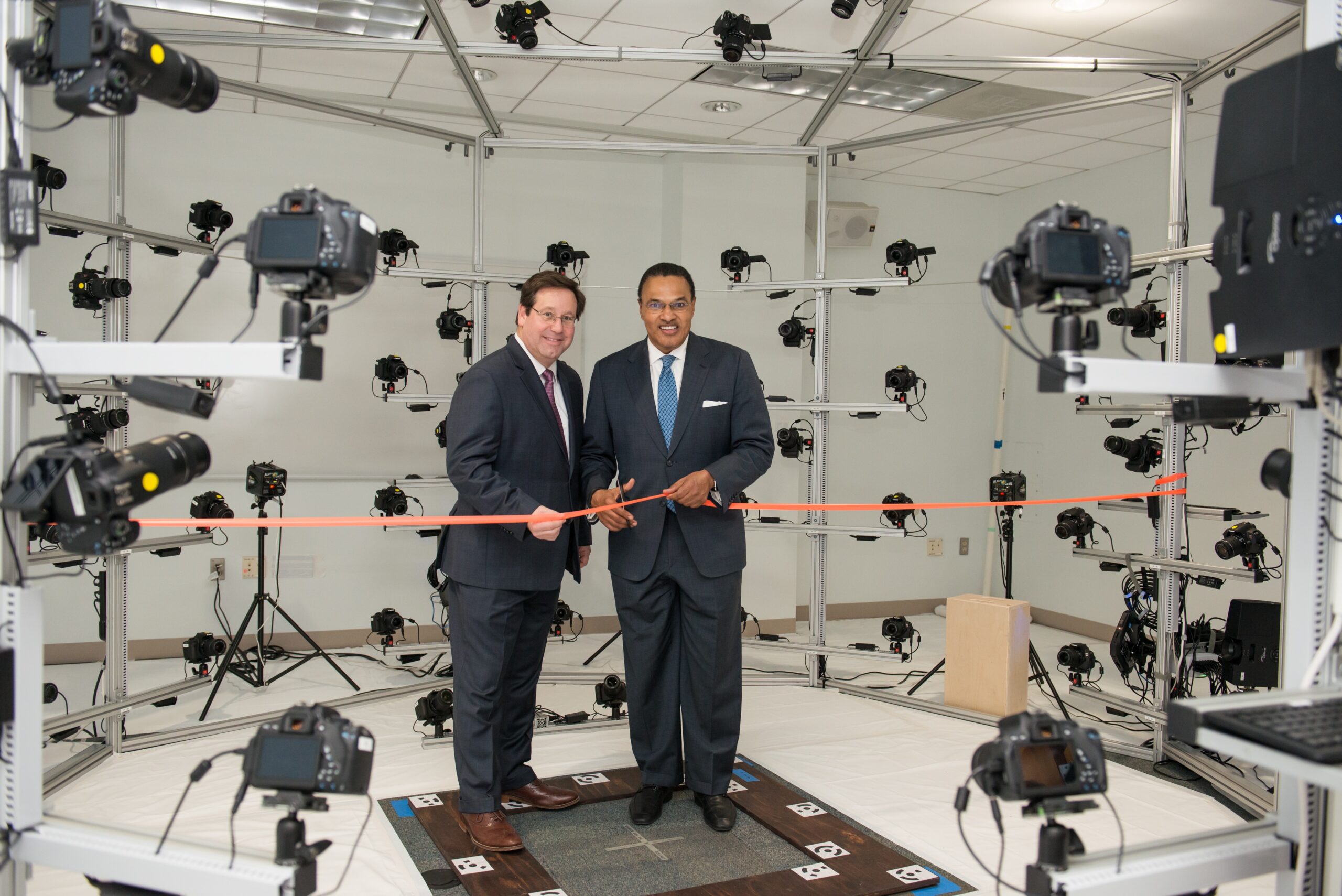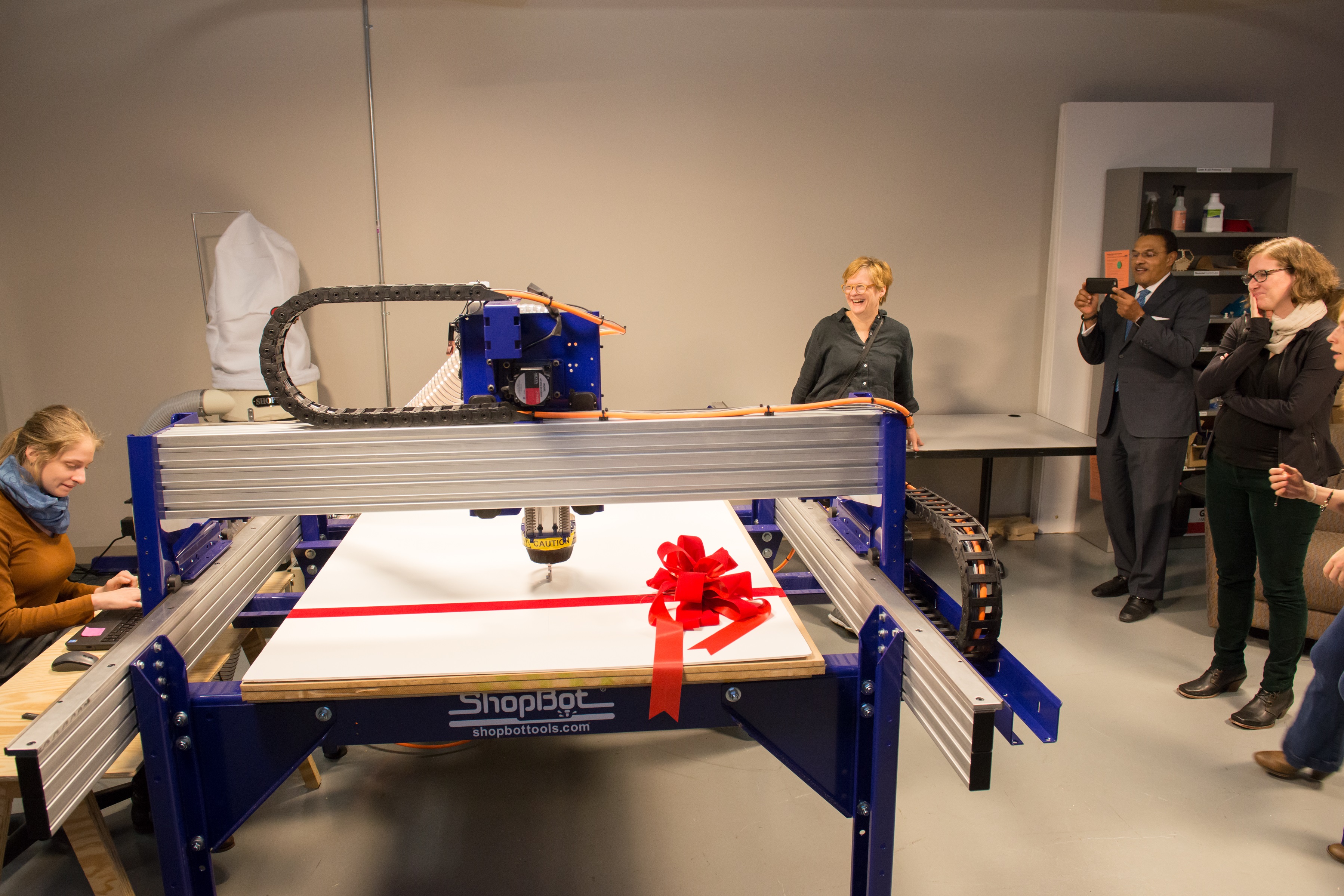UMBC’s Imaging Research Center (IRC) has debuted the 3D Scanning Room, featuring new software that allows 3D models to be created by combining dozens of 2D photographs. A ribbon-cutting event and brief remarks from President Freeman Hrabowski and Vice President of Research Karl Steiner were held on Tuesday, December 8.
The 3D Scanning Room features 90 digital single-lens reflex (DSLR) cameras that are set up in a circular formation around a space where people or objects are positioned for 2D photographs. The cameras take simultaneous photos, looking for features like textures and edges that reflect light.
Once the photos are captured, they are processed through special software called Agisoft Photoscan, to create a virtual 3D model of the subject. It takes between four and six hours for the software to render a clear and detailed 3D image from the approximately 900 photos that are taken, but a rough depiction is available within an hour of the photos being snapped.
President Hrabowski said that the technology in the 3D Scanning Room is expanding the possibilities for UMBC researchers, thinkers, and artists. “This technology connects faculty across disciplines, and is fascinating because it goes across all UMBC colleges and departments,” he said.
Steiner described the 3D Scanning Room as a “three-legged stool”—a reliable, stable, easy to use system to create 3D models through the three steps of visualization, scanning and fabrication. Fabrication refers to the actual cutting or layering of the data to create a tangible 3D model.
The subjects being photographed do not need to be stationary. The cameras can capture people or objects in motion, explained Don Engel, assistant vice president for research at UMBC.
Direct Dimensions, Inc., a Maryland-based company specializing in 3D imaging for the medical, consumer and military industries, worked with UMBC’s Marc Olano, associate professor of computer science and electrical engineering (CSEE) and principal investigator (PI), and Dan Bailey, director of the IRC and co-PI, to create the 3D Scanning space. The space was funded through a $180,000 grant from the National Science Foundation.
A second new tool was also introduced during the ribbon-cutting event: a four-foot-by-eight-foot ShopBot, a type of CNC mill, run by Lisa Moren, professor of visual arts, and Amy Hurst, assistant professor of information systems. Different drill bits attach the CNC tool to create various cuts and patterns in materials, including wood and stone.
Read more about the ribbon-cutting event, “A crazy 3D-scanning room was recently delivered to UMBC,” on Technical.ly, and “Immersive, 3D scanner comes to UMBC,” on The Daily Record.
Images: President Hrabowski and Michael Raphael, CEO of Direct Dimensions, Inc., at the ribbon cutting for UMBC’s new 3D Scanning Room (top); The ShopBot cut its own ribbon during the introduction of the second new tool in the IRC (bottom). Photos by Marlayna Demond ’11.
3D model linked within text was created by Direct Dimensions, Inc., which used 2D photos taken by the scanning device at UMBC.
Tags: CAHSS, COEIT, CSEE, Hrabowski, IS, Research, VisualArts


